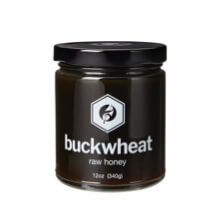Small Batch Spiced Festive Honey Mead Recipe
December 06, 2023
by Lisa Johnson

The History of Mead
Mead, often referred to as "nectar of the gods," boasts a rich and storied history that spans millennia. Its origins can be traced back to some of the world's earliest civilizations, with evidence of mead production dating as far back as 7000 BC in China.However, it was the ancient Egyptians who truly elevated mead to a revered status, as they believed it to be a gift from the sun god Ra. Mead was often used in religious rituals, and its honeyed sweetness was associated with divine blessings. As the recipe for mead spread throughout the ancient world, it became a symbol of celebration and merriment in cultures ranging from the Vikings of Scandinavia to the Celts of Europe.
During the Middle Ages, mead experienced a surge in popularity in Europe, particularly in the British Isles and the Nordic regions. Monasteries played a significant role in mead production during this period, as monks cultivated beekeeping and refined brewing techniques. Mead was not only enjoyed as a beverage but also used for medicinal purposes.

Its reputation as a versatile elixir continued to grow, and by the Renaissance era, mead had firmly established itself as a symbol of hospitality and hospitality. However, with the introduction of beer and the rise of distillation in the following centuries, mead gradually faded from mainstream consumption. Today, mead is experiencing a resurgence in popularity, with modern meaderies crafting a wide range of styles, from traditional honeyed meads to innovative, fruit-infused varieties, reigniting interest in this ancient libation.
Making Mead at Home
Making mead at home is surprisingly straightforward and incredibly rewarding. With just a few basic ingredients—honey, water, and yeast—you can embark on a delightful journey of crafting your own homemade mead.The process involves mixing these simple components, allowing them to ferment, and then patiently waiting as nature works its magic. Mead-making allows for endless creativity, as you can experiment with various types of honey, spices, fruits, and herbs to craft unique flavors to suit your taste.
Whether you're a seasoned homebrewer or a complete novice, the art of making mead offers a delicious and enjoyable hobby that connects you to a tradition spanning thousands of years, bringing the delightful taste of history to your own kitchen.

Small Batch Spiced Festive Mead
The recipe is a small batch mead which means it is a one gallon recipe instead of a typical five gallon recipe. A short mead means the mead is ready to imbibe within weeks instead of months to years before tasting. The recipe uses less of everything from ingredients to equipment. Most importantly, the mead tastes delicious!Equipment
2 gallon Stock Pot1 gallon carboy
Airlock to fit carboy
Funnel with screen
Fermtech auto-siphon with 6 feet of tubing
3 – 4 glass bottles with flip top lids
Star San – Most Important
Star San is the sanitizer one uses to clean all equipment before starting to make mead. It is the baseline to all home brewing. Any piece of equipment that will touch the mead must be sanitized. Fill a five gallon bucket with water and add the Star San according to the directions. Sanitize the carboy, airlock, siphon, tubing, funnel and all the flip top lid bottles. Let the equipment air dry.

Ingredients
1 gallon water (can be used from the tap)2 lbs Adagio Buckwheat honey
12 raisins
Juice from one orange
1 cup strong brewed Black Tea
2 tbsp Selefina Mulled Spice Mix
1 pack Lalvin D47 yeast (easily purchased on line)
Directions
1. In a large stock pot bring 12 cups of water plus 2 pounds of Adagio Buckwheat honey to boil over medium heat.2. Add the 2 tbsp of Selefina Mulling Spice stirring well to blend.
3. Reduce heat to simmer 30 minutes to an hour based upon personal taste. Expect white foam on top.
4. After simmering, skim foam and let cool to room temperature.
5a. Meanwhile, add to the carboy 12 raisins, 1 cup cool Ceylon tea and orange juice. Check to see if the water, honey and spice mixture is cooled to room temperature.
5b. ONLY when the mixture is at room temperature do you add the yeast package to the CARBOY.
6. Let the yeast sit in the carboy for a few minutes swirling to mix. Using the screened funnel, pour the honey, water spic mixture into the carboy. Fill to the neck of the carboy.
7. Leaving space in the neck of the carboy allows the fermenting gasses to escape through the airlock. Use the Star San water mixture to fill the airlock. Place the airlock tightly into the neck of the carboy. Put the carboy in a warm dark place to ferment for three to four weeks.
8. Check it daily.
9. When there are no more bubbles in the airlock, the mead is done.
10. You will note sediment on the bottom of the carboy. You will see the raisins at the top of the neck. Use the siphon to transfer into the flip top lid bottles. Do not siphon the sediment. You may end up leaving a quarter of the mead at the bottom of the carboy. Only siphon the clear mead. The sediment is very bitter and ruins the taste of the clear mead.
11. The mead must be refrigerated.
12. Burp the bottles everyday if necessary.
This mead is delicious cold or warm. Drink it straight or use it as a mixer. Adding honey liquor, brandy, whiskey or rum is also very good. Also enjoy it as mix with apple cider!